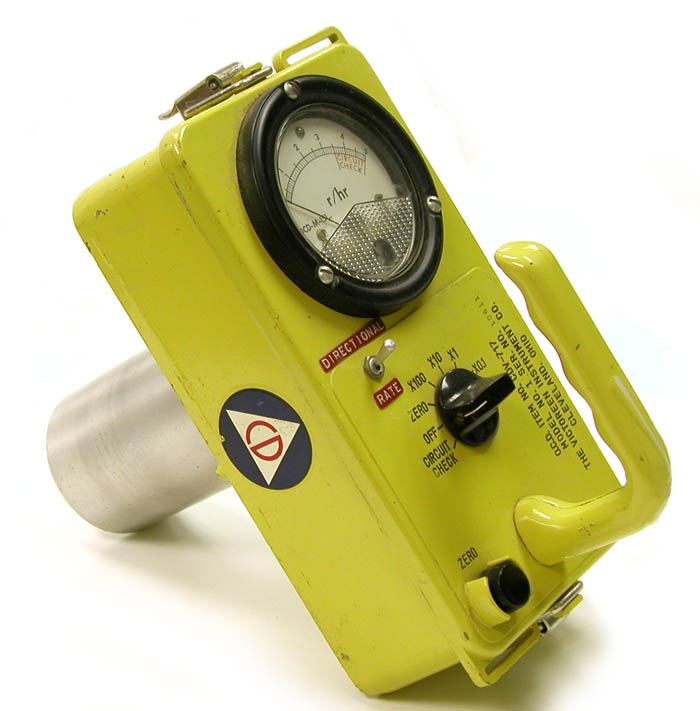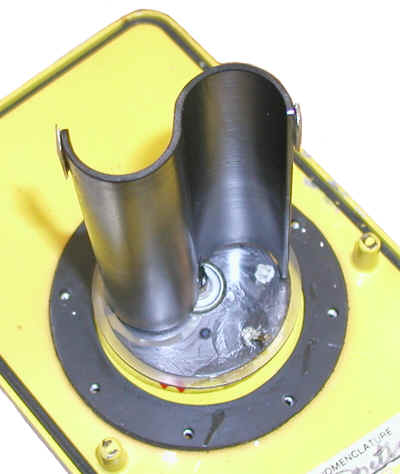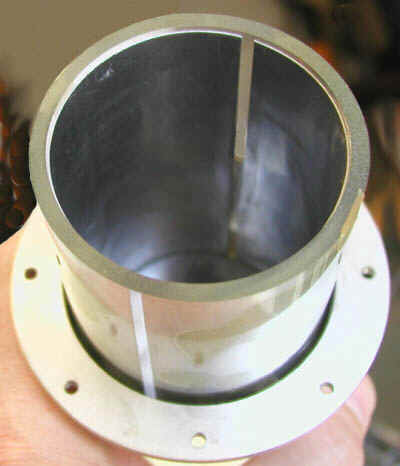R&D Prototype of a Directional Survey Meter (1970-1975)

This particular instrument is a research and development (R&D) prototype of a directional civil defense ion chamber. It was designed and built by Dr. Stanley Kronenberg who would later patent a very similar survey meter employing a GM detector (US Patent 6,433,335).
Its purpose was to pinpoint the major sources of radiation around a fallout shelter. This would help determine where additional shielding might be required and/or which areas (e.g., the roof or sidewalk) should be decontaminated first.
The instrument could either operate as a standard rate meter or as a directional meter. When the latter mode of operation is selected, it is likely that the needle drops to zero when the chamber is pointed at the source. The unit has three controls: a range switch, a zero adjust knob, and a switch to select the mode of operation (ratemeter/directional).
The detector proper is a triode (three electrode) ion chamber located inside an aluminum housing attached to the body of a modified CD V-717. The outer wall of the chamber is formed by a Lucite cylinder. Two thin steel plates pressed against the inside of the plastic cylinder serve as two of the three electrodes. As seen in the photograph (below right), these plates are about two mm apart. The third electrode (anode) is a central “S-shaped” plate of what appears to be graphite (below left). In effect, this central electrode divides the chamber into two sub-chambers. The system works by measuring the difference in the signals generated in these two sub-chambers. When there is no difference in signal, the instrument is pointing towards the source of radiation.


Range: 0-5, 0-50, 0-500, 0-5000 R/h
Size of case: 4.25” x 8” x 2.5”
Detector housing: 2.25” diameter x 4.5” long
Batteries: One 1.5 volt “D” cell
Donated by the Federal Emergency Management Agency courtesy of Carl Siebentritt.
References
- Kronenberg et al. Geiger-Mueller triode for sensing the direction of incident ionizing gamma radiation. US Patent Number 6,433,335, August 13, 2002.
- Carl Siebentritt, personal communication.
